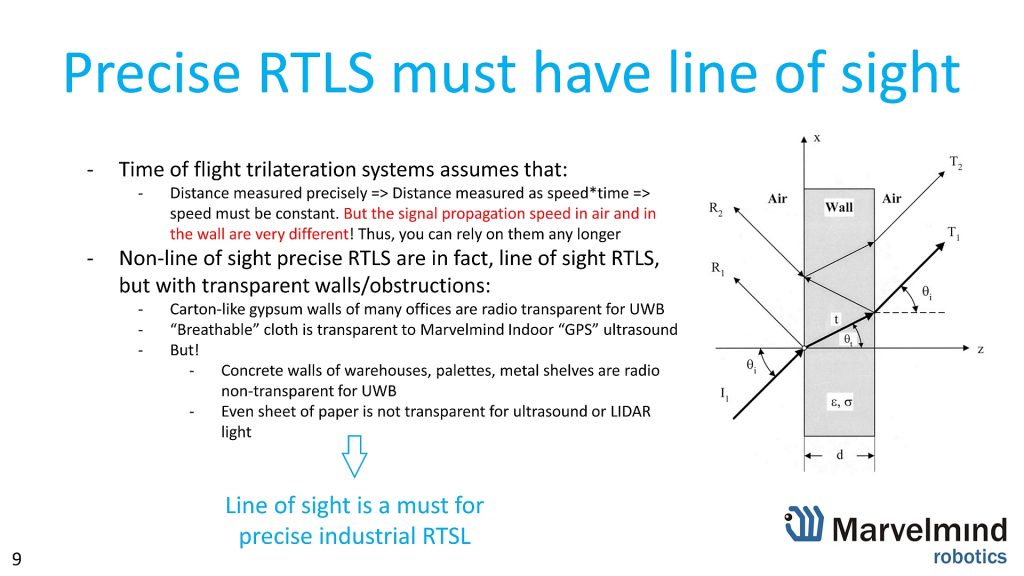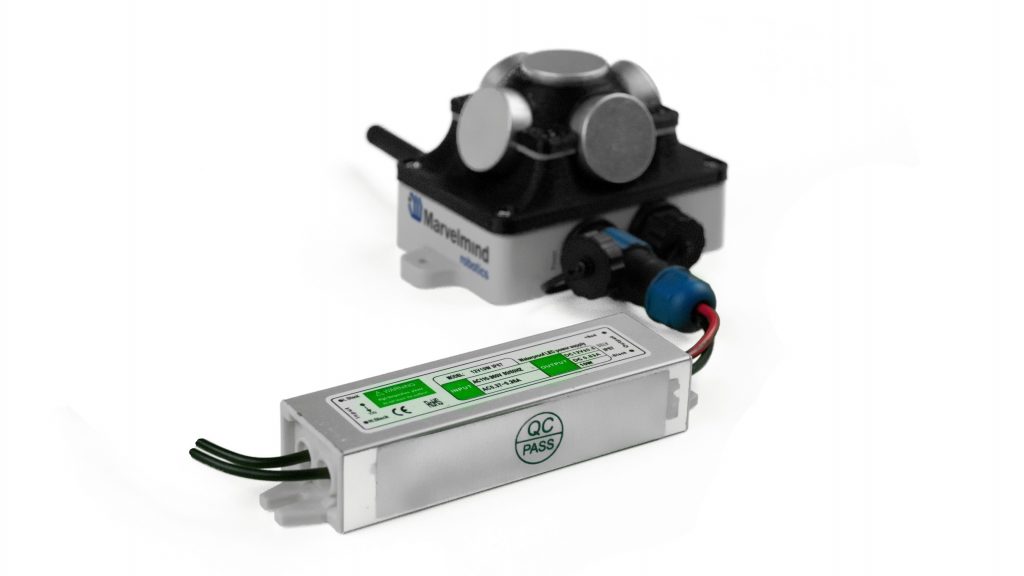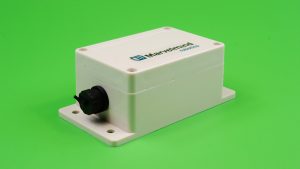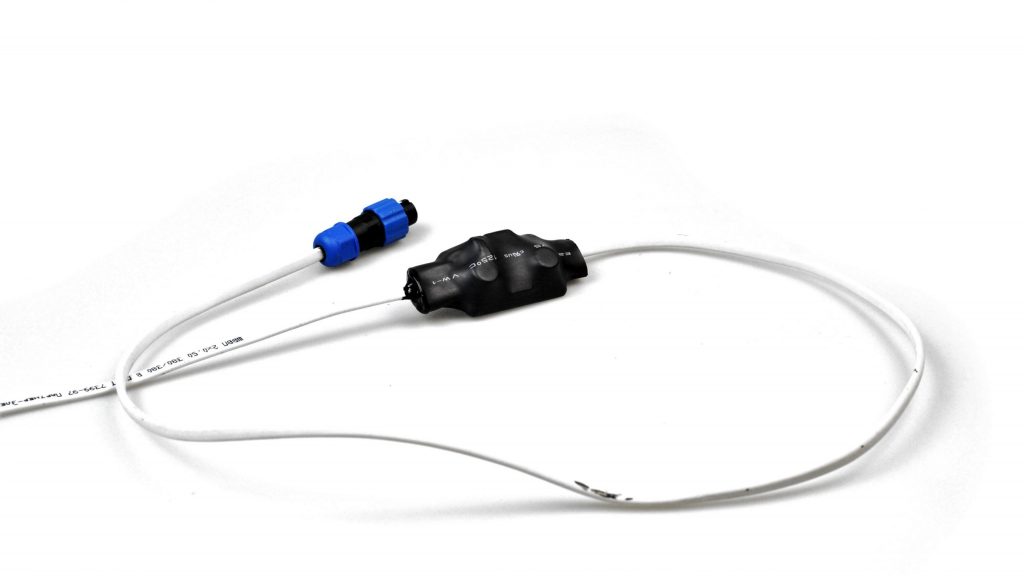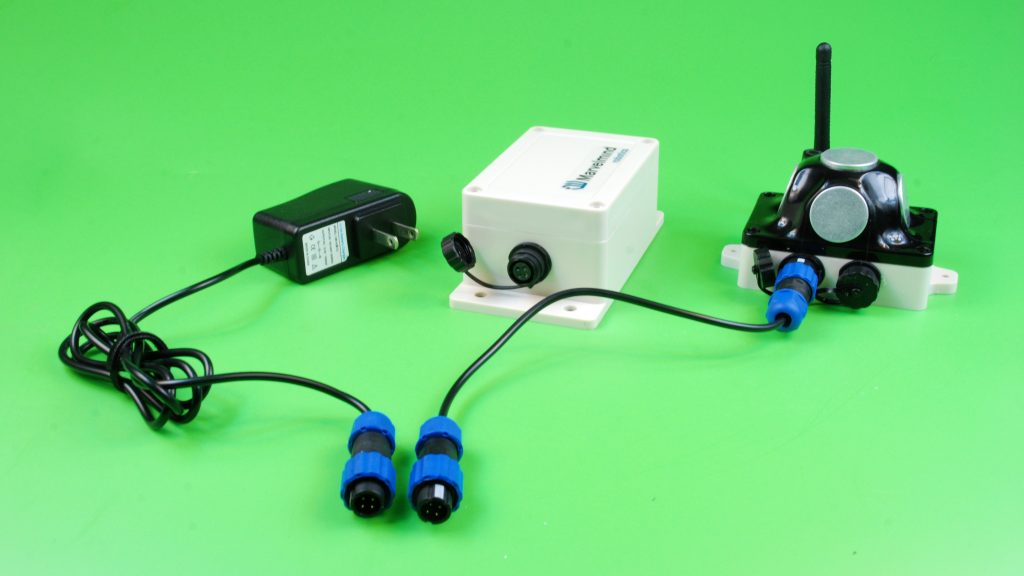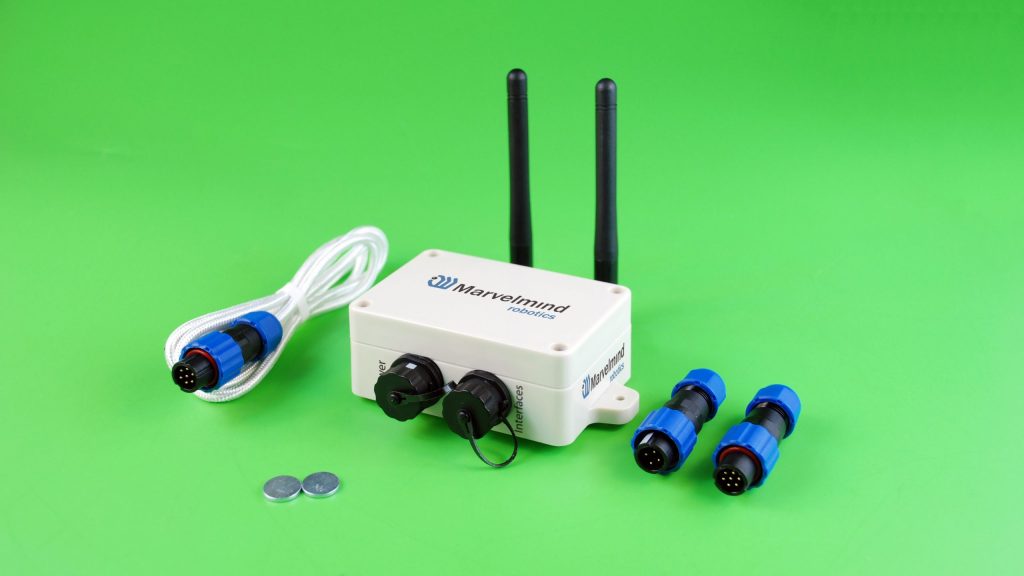Ultra-wideband (UWB) indoor positioning system
UWB intro:
Superb technology for positioning: unlike BLE, WiFi, LoRa, or ZigBee, UWB is designed for positioning. It is a perfect and recommended solution for industrial applications. It provides confident sub-meter accuracy of positioning (line of sight). Typical – 10-30cm (with a line of sight).
Use BLE/WiFi and similar RSSI-based solutions with an app on your phone for less demanding applications like finding a gate in the airport, finding a masterpiece in a museum, or buying milk in a mall. But for real industrial applications, BLE is not precise enough to the physics of the underlying technology – RSSI – even with the help of the angle of arrival/transmission.
UWB technology basics: there are a few dozen notable suppliers of UWB-based solutions worldwide. See our List: https://marvelmind.com/list.
We focus more on practical aspects of the implementation of UWB (or any other precise indoor positioning system) because the devil is in the details.
Practical recommendations
Build with a line of sight only
We have discussed this subject multiple times already and have to keep going:
Precise indoor positioning systems need line of sight
UWB can be pretty confusing from this perspective because it kind of promises a non-line-of-sight tracking possibility. No, it can’t. But why do some people say that it can?…
Let’s agree on the terms first. What is a line of sight? – it means a line of sight for radio waves in the GHz band (3-10GHz) where UWB operates. This means that everything works well when you test a UWB system in a fancy office with radio-transparent walls (glass, wood, thin bricks, etc.). But then everything becomes pretty messy in a real warehouse or a factory.
Why does this happen? – because you have a non-line of sight situation: thick concrete walls, metal shelves, palettes. UWB signal doesn’t propagate, scatters, and is delayed without control. It is a significant problem.
Solution – design and build systems with a line-of-sight requirement in mind. Line of sight between what and what? – between stationary beacons (anchors) when you build the map of beacons and line of sight between stationary beacons tracking the mobile beacons (tags).
Even your own body can block the UWB signal and distract tracking. It is not blocking when the signal can’t come through completely – usually, no. But it is a severe distraction to the system that must be understood and considered.
UWB is a time-of-flight-based system, i.e., there is an underlying assumption that propagation speed (speed of light) is known. It is true when the UWB radio wave propagates through the air – nearly the same speed as in a vacuum. But that is not the case when the UWB propagates through your body, not to mention through a concrete wall. The speed of radio in those materials is unknown, and the excessive delay is not taken into account by the indoor positioning system anyhow as a result – an uncontrollable error in tracking down to a complete loss of tracking and jumps.
Solution – install mobile beacons (tag) so that the UWB radio waves would experience minimal chances to go through your body. Therefore, install mobile beacons (tags):
- Top of the shoulder – good
- Top of the head – good
- Chest pocket – not recommended
- Wrist – not recommended
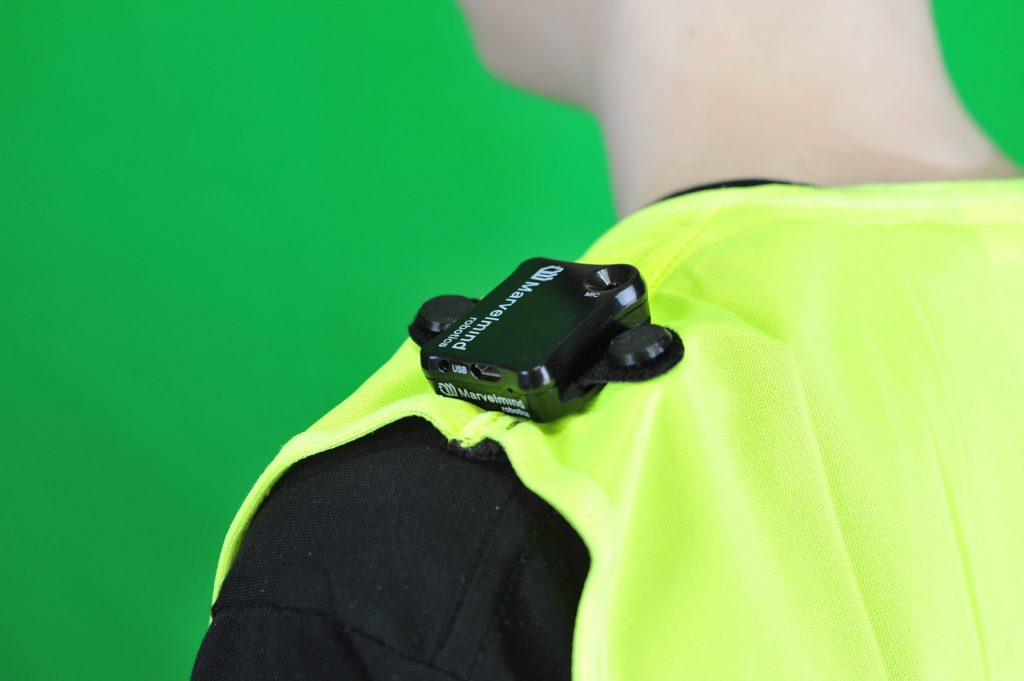
Power supply
There are two significant elements of the system you have to power:
- Stationary UWB beacons (anchors)
- Mobile UWB beacons (tags)
Often, UWB manufacturers claim 1 year, three years, five years, or even seven years “battery lifetime”. The right questions are:
- The battery lifetime of what? – stationary beacons or mobile?
- With what update rate is it?
Battery lifetime of mobile beacons
Let’s first address the most basic question – the battery lifetime of a mobile beacon. Yes, it can be made very long in the UWB system. But why?… It makes sense only if you can’t charge it for whatever reasons. That is valid, for example, for static objects – palettes or similar – thousands of them scattered over a large territory. It doesn’t make a real difference for mobile objects such as forklifts because one can power the mobile beacons from the forklift itself.
Everyone is accustomed to charging devices for people tracking – headlights, walkie-talkies, phones. Of course, the rarer you change – the better. But it is not a real advantage to have years of battery lifetime in the mobile beacons because, usually, they are accessible.
The battery lifetime of stationary beacons
There is a lot of misdirecting and misleading messages in such statements because the fundamental limitation is in stationary beacons (anchors)
Why is it so?
Stationary beacons are usually far less accessible than mobile beacons. They are placed somewhere on the ceiling. Often, you can’t reach them physically or without a special permit for work on high grounds.
Stationary beacons (anchors) in many implementations by other companies sometimes consume up to watts, i.e., nearly impractical to run them from batteries. But running electricity to them often costs more than the beacon itself. That is the limitation. That is the real point about the battery lifetime.
Ask your supplier whether their stationary beacons can be battery-powered and a battery lifetime. Of course, if the powering or cabling is a potential issue.
We always recommend powering the stationary beacons from the fixed power because it gives peace of mind. But, yes, we support internal and external batteries, and the life with the external battery can be months or 1-2 years if the battery is large enough.
Battery lifetime and "average power consumption"
Like any device of similar time, including mobile phones or computers, beacons sleep most of the time and jump between drastically different power supply modes very quickly. Thus, when it sleeps, it doesn’t consume – nA or mA – would work for tens of years – the battery self-charging may be higher. But! When the beacon transmits or receives, it consumes 150-200mA – this current would drain the typical battery in a few hours.
It is simply incorrect to talk about average power consumption for systems with such highly irregular power consumption.
Therefore, it is more correct to measure the battery lifetime not in hours/months/years but in the number of location updates the battery supports. And then, it is up to the end-users to decide when and how to consume the available number of location update events: quickly with 100Hz location update or very slowly with 1 location update per minute.
Of course, there is also a cumulative standby/sleep current and periodic telemetry updates current, but those are mostly the 2nd-degree impacting factors. The main one is how many location updates your battery would support.
Backbone connectivity
Everything discussed above, power consumption for stationary beacons and practical impact on the cost of the solution, is exasperated by requirements to the backbone.
Many UWB systems require not only a fixed power supply, which is OK… but additional data cabling, such as Ethernet. That can be a severe cost. For example, if you go to an explosion-prone environment, like oil and gas, that is a very high cost for each wiring you require.
It is perfect when the system doesn’t require additional cabling and everything (synchronization, data exchange, telemetry, etc.) is done wirelessly. It is possible. Just ask for it.
